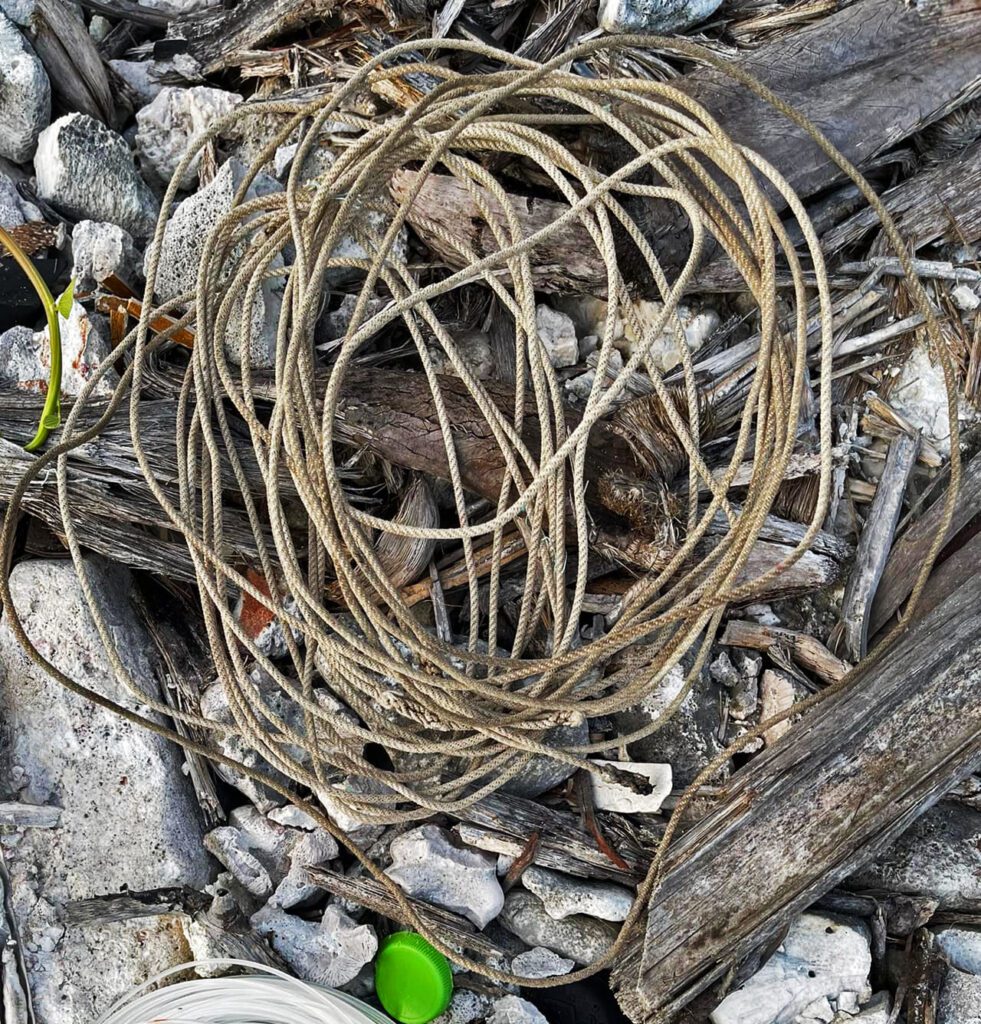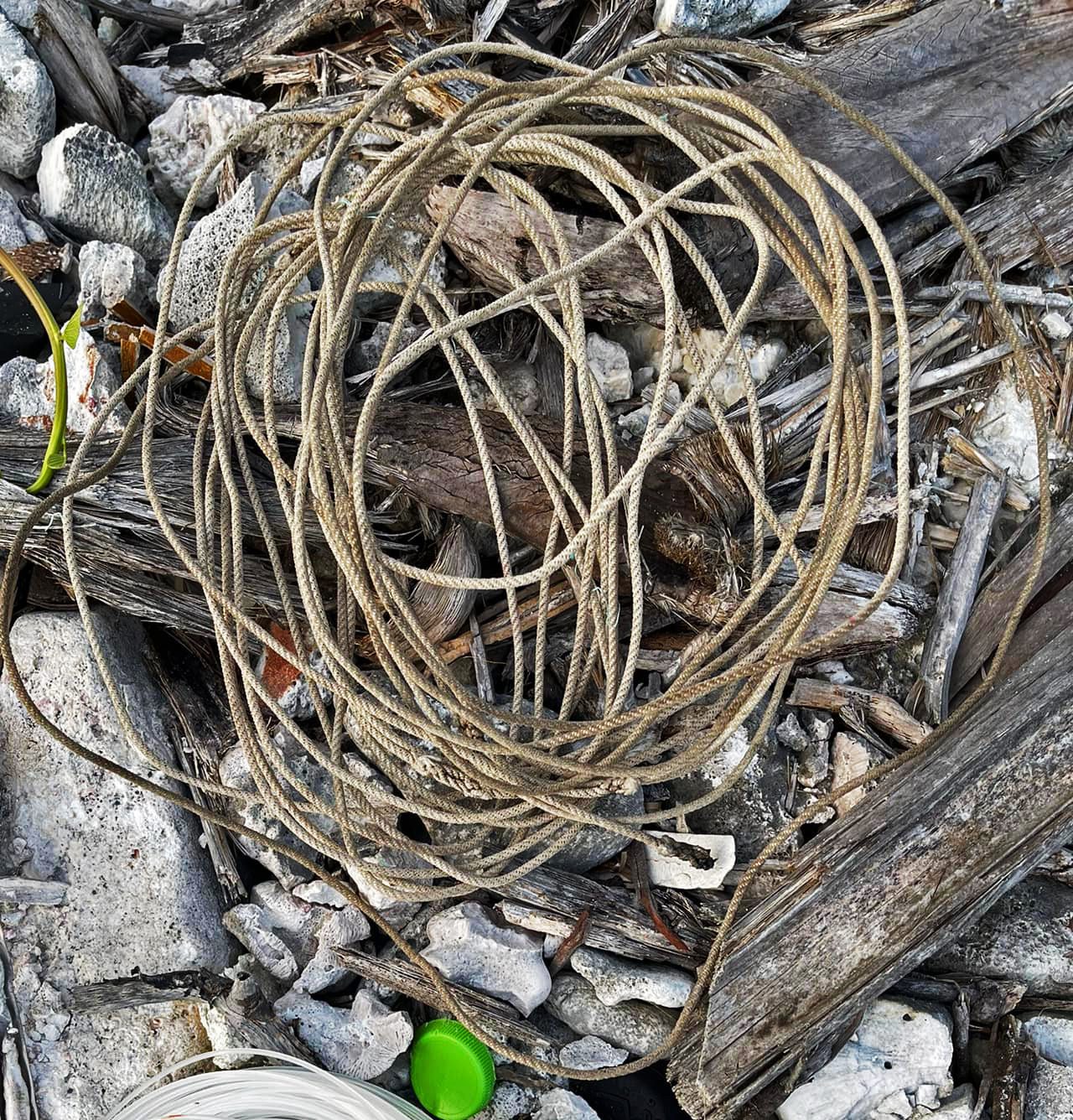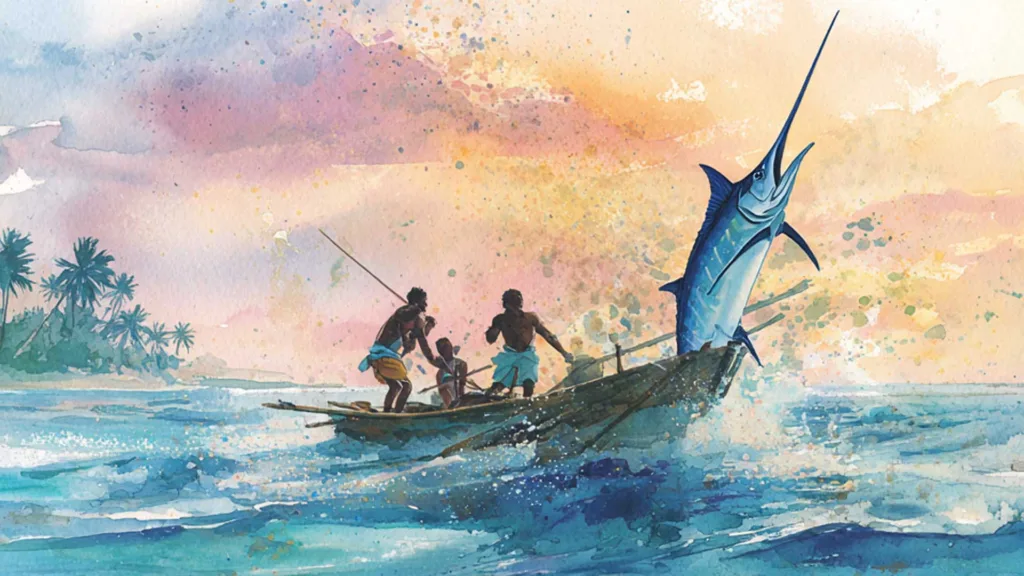
Nanu, a cordage made from plant fibers, was the main type of fishing line used by the fishermen in the past. A type of raw fiber called “ui” was brought in from nearby countries like India and Sri Lanka and used to make Nanu, or the fishing line.
Humans used bark to make fishing lines in the past, according to historical records. The year 2023 saw the recovery of a three-ply cord fragment from a cave in France by researchers. It was thought to be a 50,000-year-old fragment (Hansen, 2023).
Fibers were twisted or braided together to make cordage. This made the fibers stronger than a single fiber that wasn’t twisted.
The dhoanis used nanu of different sizes. The raw materials for nanu were brought in by fishermen and stored at the home of the boat owner. To make these one-of-a-kind fishing lines, the fishermen wound the fiber around a special spool called firoshi.
Numerous fibers and strands were twisted together to form the fishing line. This natural line’s best qualities were moderate stiffness and good relative clarity.
Indian and Sri Lankan people used to make fishing lines out of leather, flax, papyrus, hemp, linen, cotton, jute, sisal, animal hair, and water reeds.
To make this unique fishing line, fishermen stayed on one side of the road and stretched fibers into three lines to create Nanu. When nanu was ready, blacksmiths (kanburuverin) assisted in the creation of hooks.
The feathers of roosters were used to make lures, or vadhu. The soft white part inside the sea lettuce (maggoo) plant was also a part used in the lure.
After preparing the nanu and hooks, the keyolhu and his helper awoke the crew at night to begin fishing.

